Soltar
Soltar is an embodied interaction system that blends a wearable, haptic cues, and adaptive music to unlock emotional release through dance. For solo or group use, it eases social anxiety, strengthens body awareness, and syncs people through shared rhythm.
Dance spaces can feel intimidating, limiting expression. People often lack guidance to align movement and emotion, and many can’t reach events. Soltar needed a portable, safe, and social experience that works anywhere—indoors or outdoors.
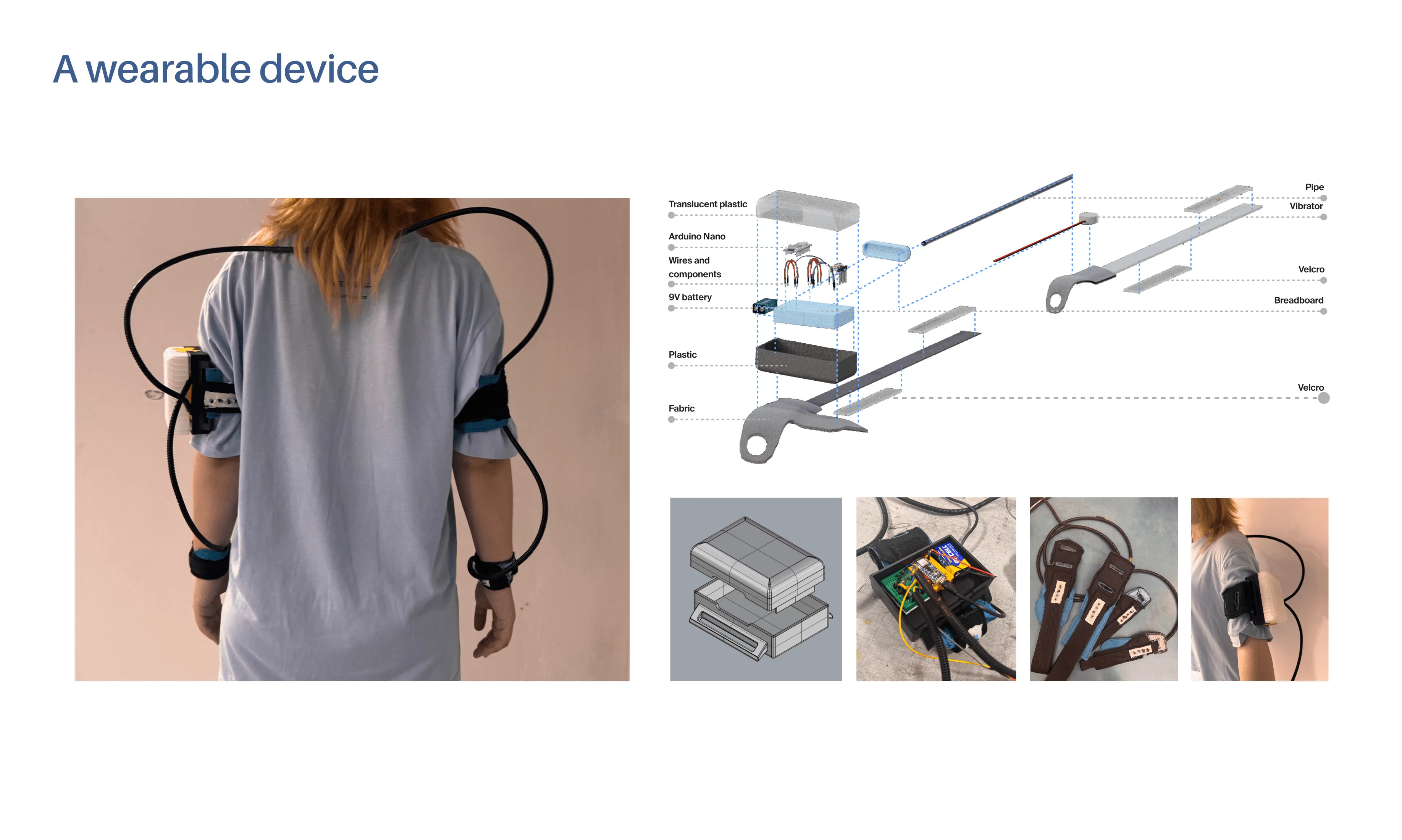
I co-designed a wearable + app that uses vibration motors, IMU sensors, and adaptive music to guide movement in real time. Haptics build body awareness while the app tunes music and vibrations to intensity and goals. Prototyped with 30+ participants; supports solo or group modes with a minimal UI and mood‑based playlists.
4 months
2025
Overview






Soltar is a wearable and app-based system that uses haptic feedback, adaptive music, and real-time motion sensing to guide users into an immersive dance experience—individually or in groups. Designed to support emotional release and social connection, it helps overcome barriers like anxiety, self-consciousness, and lack of time for traditional dance events.
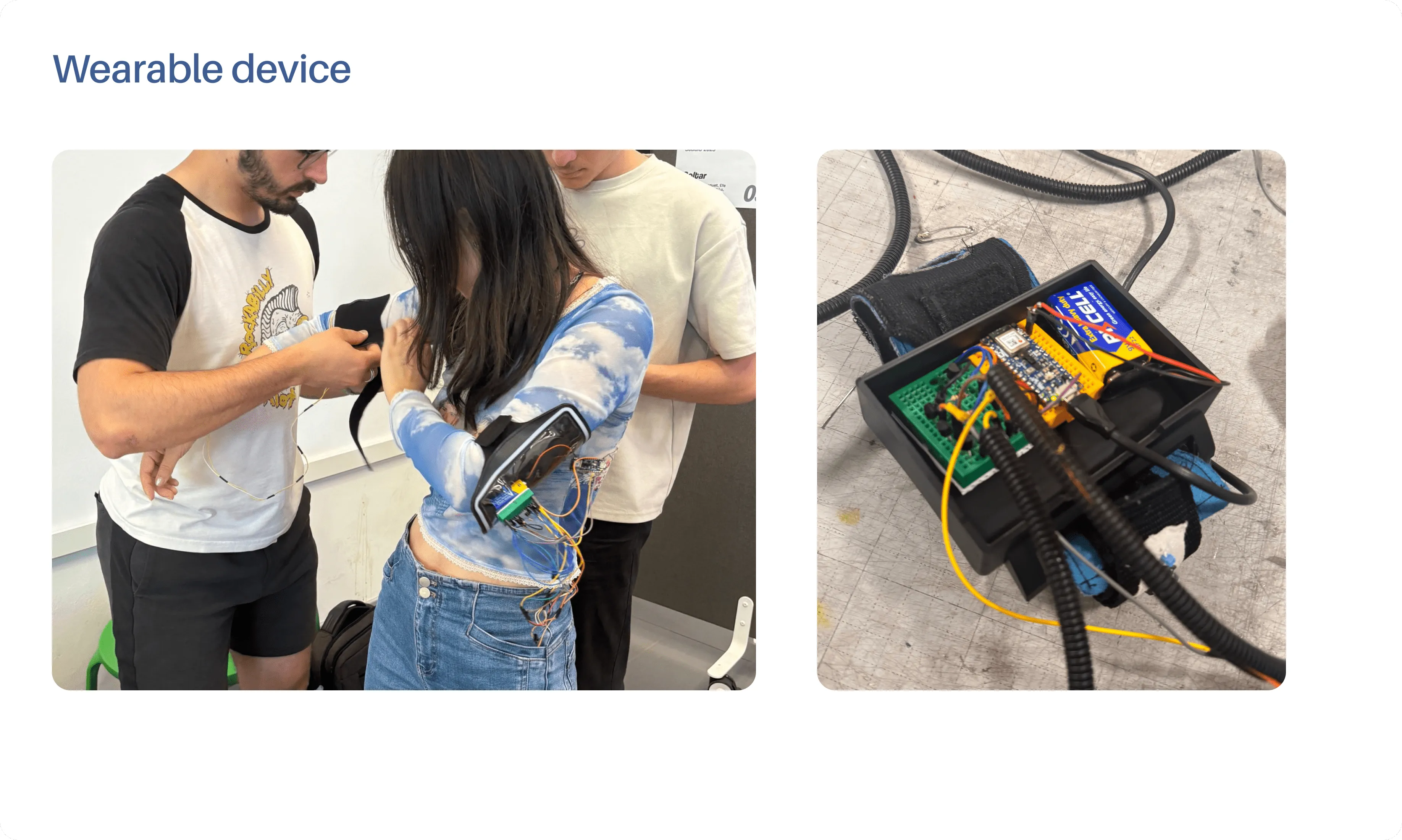
The Soltar wearable is a lightweight, body-mounted device integrating vibration motors, IMU sensors, and wireless connectivity to create an embodied guidance system for dance. Placed on the upper arms and wrists for optimal perception, it delivers adaptive vibration patterns that respond in real time to movement intensity, guiding rhythm and flow. The form factor is built from flexible fabric, secure fastenings, and a compact electronics module to ensure comfort, stability, and freedom of motion. Extensive iteration refined motor placement, vibration amplitude, and cable management, resulting in a design that is stable, perceptible, and comfortable for both individual and group dance sessions.
The research
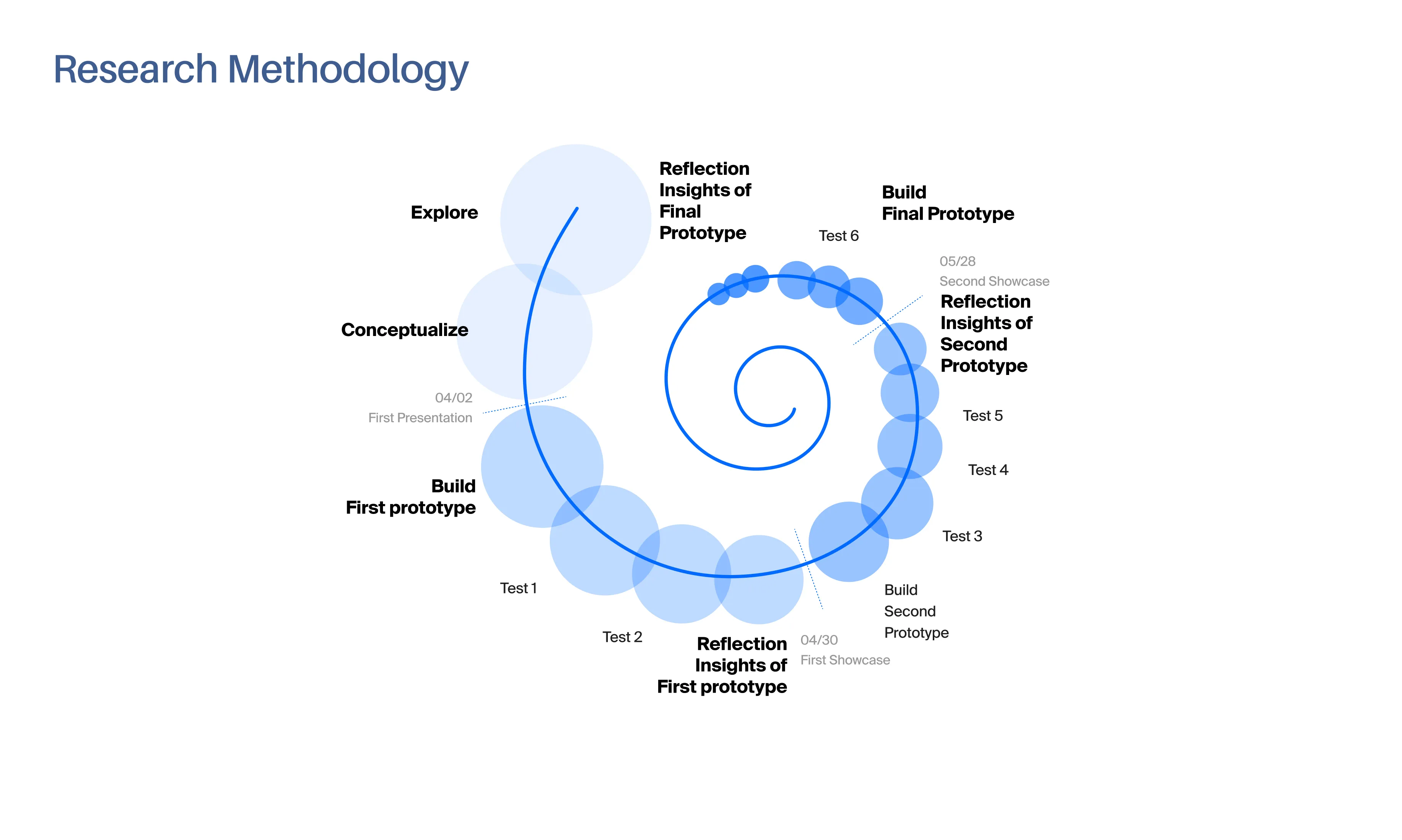
The development of Soltar was grounded in extensive exploratory research on the emotional and social dynamics of dance.
Over 30 participants took part in iterative prototype testing across seven dimensions—vibration placement, haptic patterns, IMU positioning, music adaptation, wearable comfort, UI clarity, and group experience. This process generated clear, data-informed design decisions, ensuring the final system provided perceptible, comfortable, and emotionally resonant guidance.
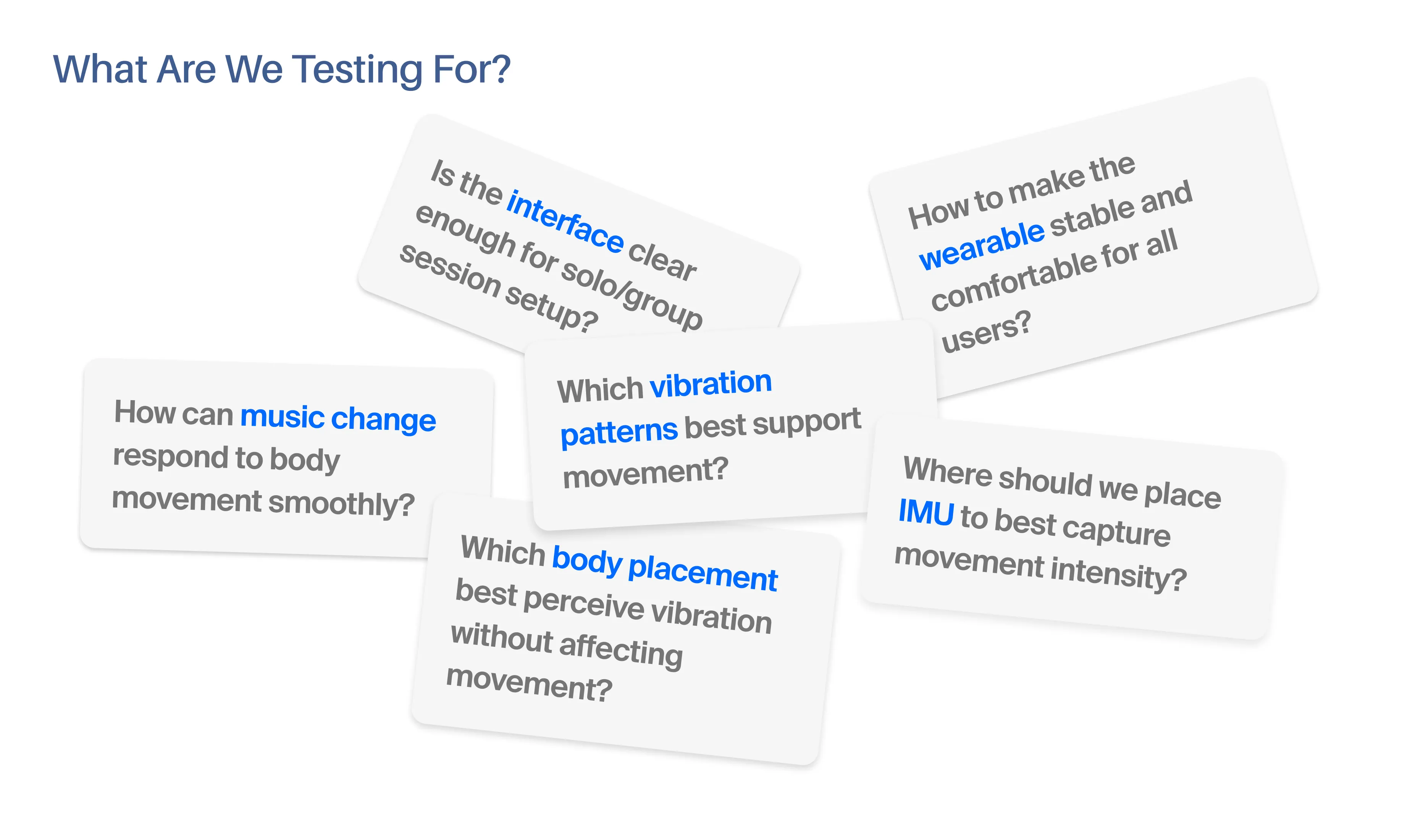
Our research led to those outcomes:
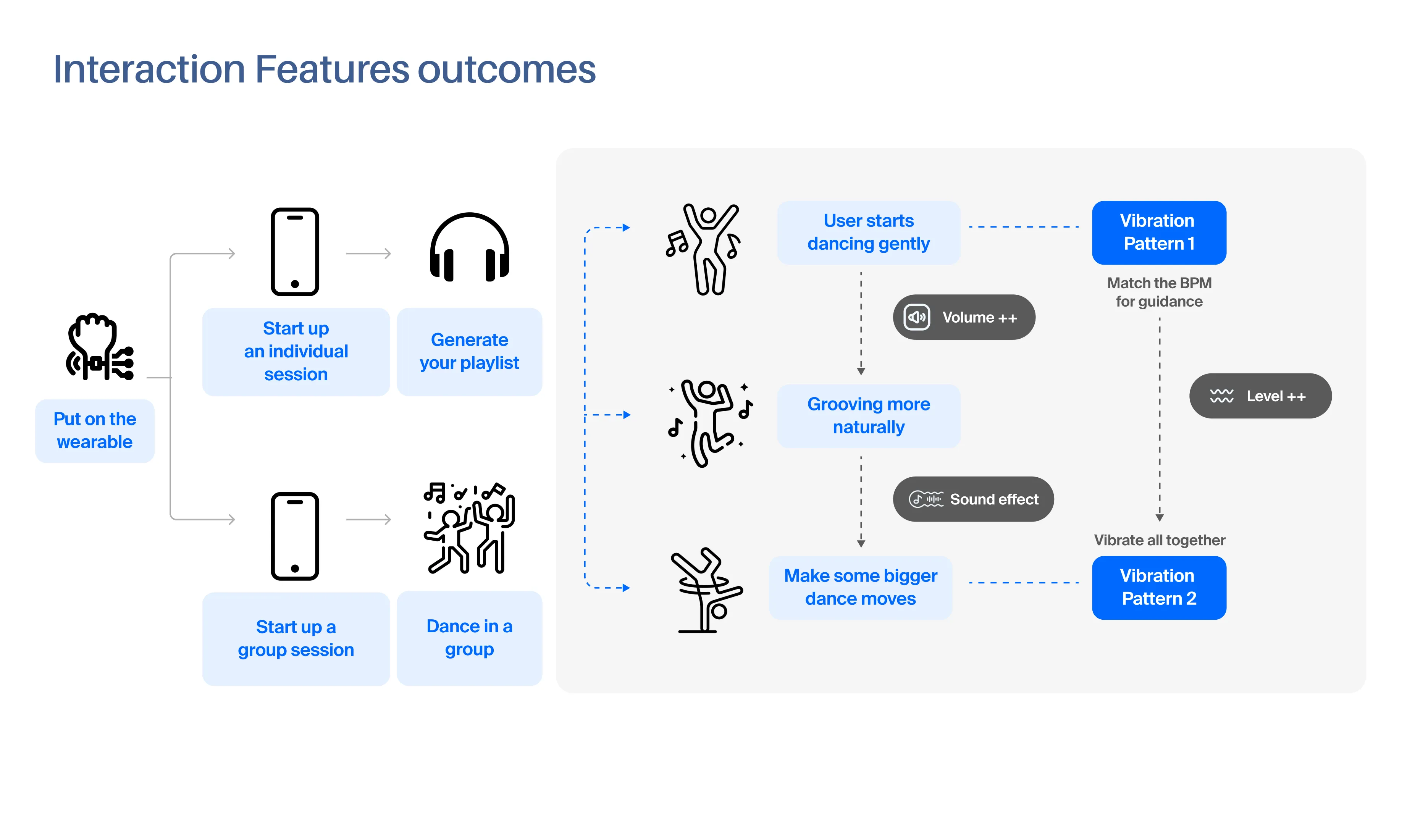
Project conceived and realized with Aranza Villarreal, Efe Eren Can Bakır, Kexin Ma, Sherif Rateb, Yifan Lu at Politecnico di Milano.